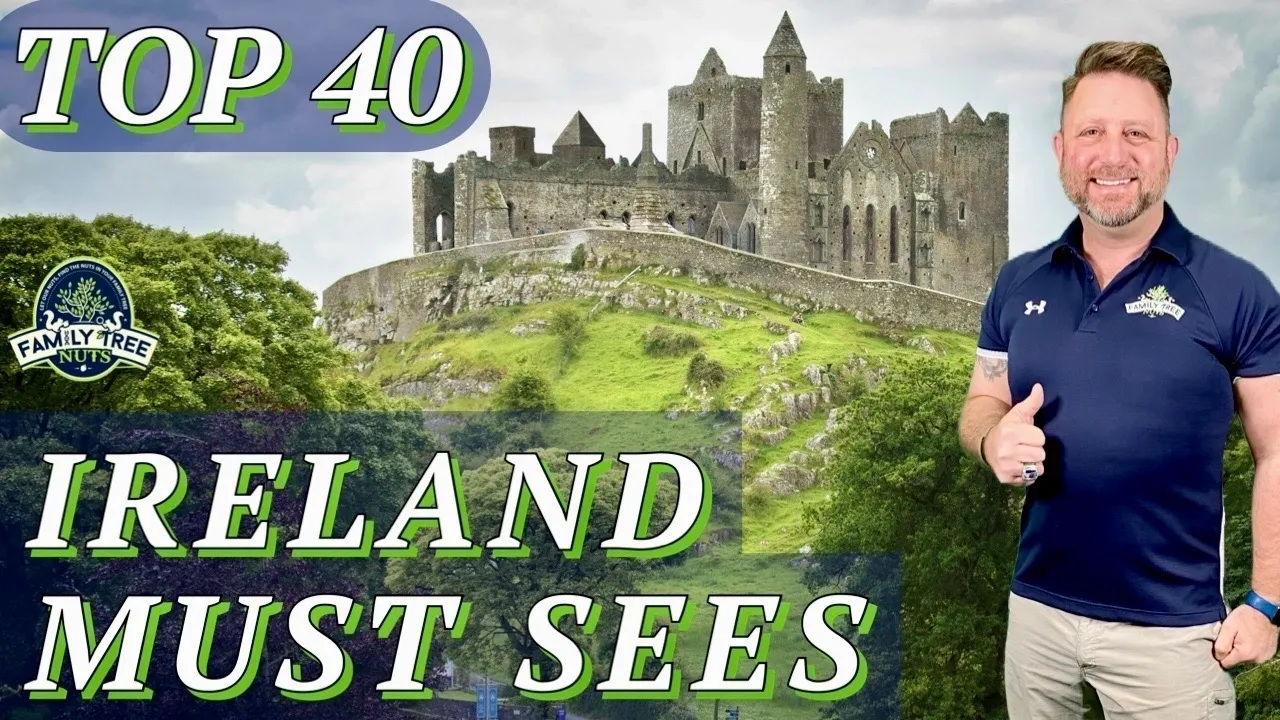
TOP 40 HISTORY MUST SEES IN ALL OF IRELAND
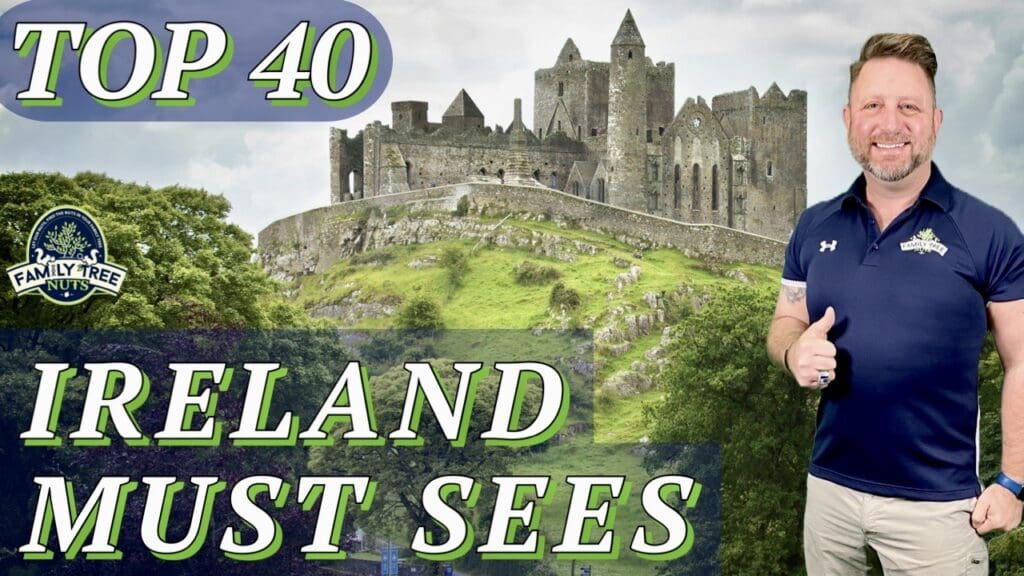
The Emerald Isle calls to millions of us. We have the inward pull back to the land of our ancestors to walk where they walked and see what they saw. While Ireland remains at the top of most of our travel bucket lists, a very small percentage of us get the opportunity to actually go. If you are one of the lucky ones to get to make the journey, how will you know what to schedule to see? If you are one of the millions that likely will never make the journey, chances are that you are still interested in what Ireland has to offer. To either crowd, this video should be very informative to you. Many of you remember Casey Kasum’s weekly Top 40 music countdown. This is our Top 40 countdown of things you must see in Ireland.
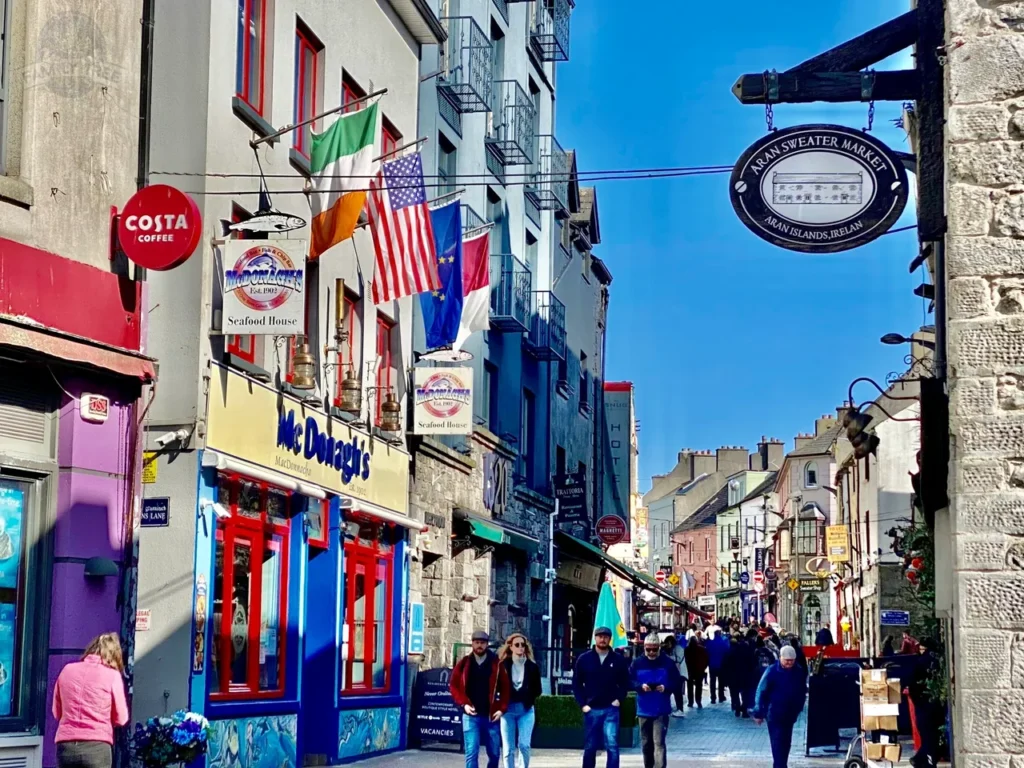
Recently we visited Ireland, took in the sights and made this list. It should be mentioned most of these sites are historic places and many modern highlights of Ireland have been left out. It should also be mentioned that this list could have been in the thousands, but we tried to limit them to the absolute best. Bear in mind, this is our list. We are a team of historians and genealogists and you may totally disagree with the way we have ranked them, so be sure to leave a comment below of how you would have changed these up a bit or tell us what we left out. I guess I should also state that this list is Ireland only, and does not include sites in Northern Ireland, which is part of the United Kingdom. And by the way, if you like articles like these, be sure to check out our website www.familytreenuts.org where we have a ton more like this. Most of our articles are at historical sites all over the United States but we do have several in a few countries. Also, many of these sites in this list have their own article with a tremendous amount of more information of the sites. Be sure to check them out as well. Oh, I almost forgot to tell you, this article has a little bit of a surprise ending, so you will want to hang in there until the end for the surprise. Ok, enough Blarney, and on to our Top 40!
40- The Oscar Wilde and Eduard Vilde Statue
Oscar Wilde was a famous Irish poet and playwright that was controversial to some and genius to others. Eduard Vilde was an Estonian writer and a diplomat. An Estonian artist created this statue in 1999, while imagining what the two great innovators with similar names would have said to each other if they ever met, even though they never did. This statue is a replica of the one in Estonia and was a gift to Galway when Estonia joined the European Union in 2004.
39- The Fisheries Watchtower Museum
This museum is said to be the smallest museum in Ireland and holds artifacts and memorabilia pertaining to the important fishing industry in Galway. The building was built in 1853 and used as a watchtower to illegal fishing on the River Corrib. Its uniqueness makes it a must see when traveling across the Wolfe Tone Bridge on your way to Claddagh.
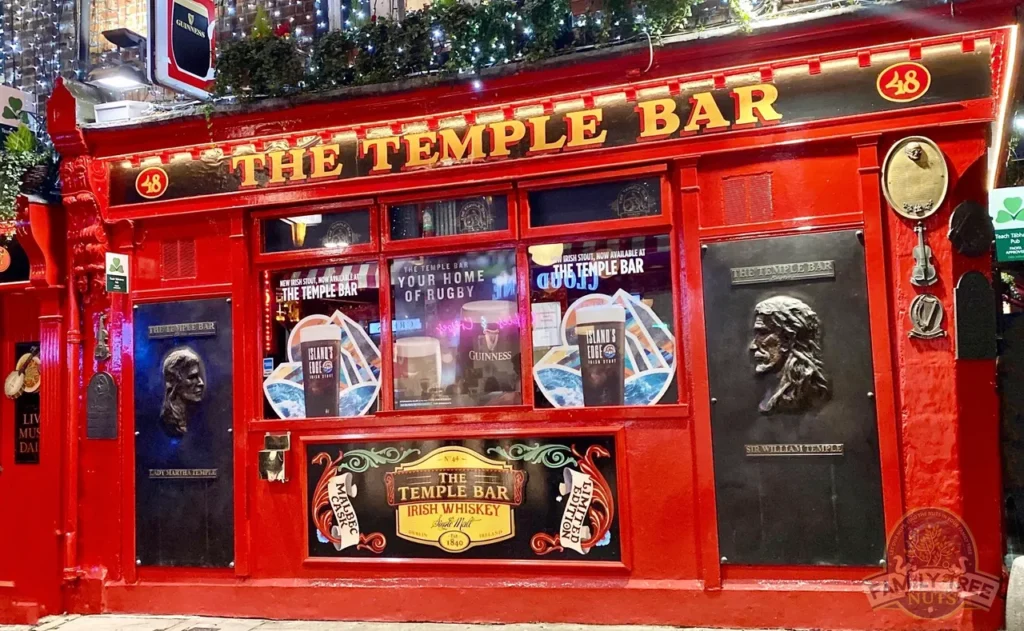
38- Blake’s Castle
One of the most preserved buildings in Galway that has survived since medieval times is the tower of Blake’s Castle which was built in the 1500s. The castle was home to the Blake’s, one for the fourteen ruling merchant tribes of medieval times. The castle sits near the Wolfe Tone Bridge on the River Corrib and across from the Aran Sweater Market. This spot is not only a very historic spot in Galway, it is one of the most picturesque locations to see down a street where the ancient world meets the modern world. This castle is not to be confused with the ruins of Menlo Castle in the county and sometimes referred to as Blakes Castle.
37- The Jewelry Shops
Celtic jewelry is popular all over the world, especially for those of us with Celtic heritage. Ireland is known for its amazing jewelry stores that have tremendous personality. Many of the shops have individuals who make them or at least modify the jewelry in house. Many of these stores have been around longer than the United States has been a country and that personality makes it an amazing memory to make your selection there. Some of these stores have had many well-known regular customers.
36- The English Market
The English Market is a famous fresh food market in Cork. The market is called the “English Market” because at the time of its founding in the 1800s, it was used for Protestants and was separate from the Saint Peter’s Market, which was for Catholics. There has been a market on this site since at least 1788 and is known for its variety of fresh fish and vegetables. The market also houses restaurants that get their food daily from the market. I also want to mention that caddy corner to the English Market is a restaurant called “Hillbillys” that serves, you guessed it, fried chicken. That fact that I live in Kentucky made the name of this restaurant quite amusing to me
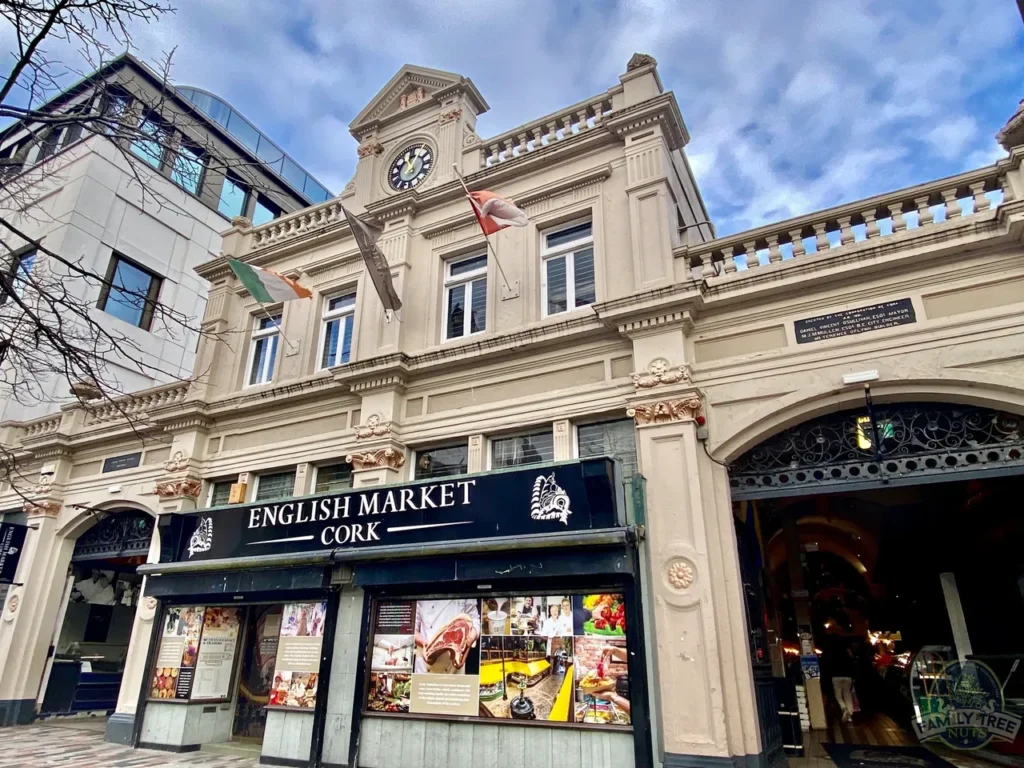
35- The River Corrib
It is hard to understand Galway without understanding the River Corrib’s influence on the city. Galway sits at the mouth of the river where it empties into Galway Bay and the Atlantic Ocean. The name Corrib is an anglicized version of an Irish word for the god of the sea. The river has also been called Gaillimh, which is pronounced Galway in English and where the city got its name. It is one of the shortest rivers in Ireland being less than four miles long beginning at Lough Corrib before it empties into Galway Bay. Four bridges in Galway cross the Corrib and it is a natural divider of sections of the town. It is a popular spot for salmon fishing and today is popular with kayakers.
34- River Lee
The River Lee is the import waterway in Cork which is the second largest city in the Republic of Ireland. It is 56 miles long and empties into Cork Harbor and then into the Celtic Sea. The river is crossed by 29 bridges in Cork City and an interesting fact is that the city was once full of interconnected canals that entered into the River Lee. Most of the canals and now covered over with buildings but you can still see some of them in places.
33- River Shannon
The River Shannon is one of the most important waterways in Ireland and is the longest river in the British Isles at 224 miles. The river divides west Ireland from the east and the south and is named from the Celtic goddess, Sionna, who was the keeper of wisdom. The Grand Canal was built in the 1700s which connected the River Shannon to the River Liffey which flows into Dublin, thus connecting the east with the west of Ireland. The River Shannon has been an important part of Ireland since the dawn of Irish civilization.
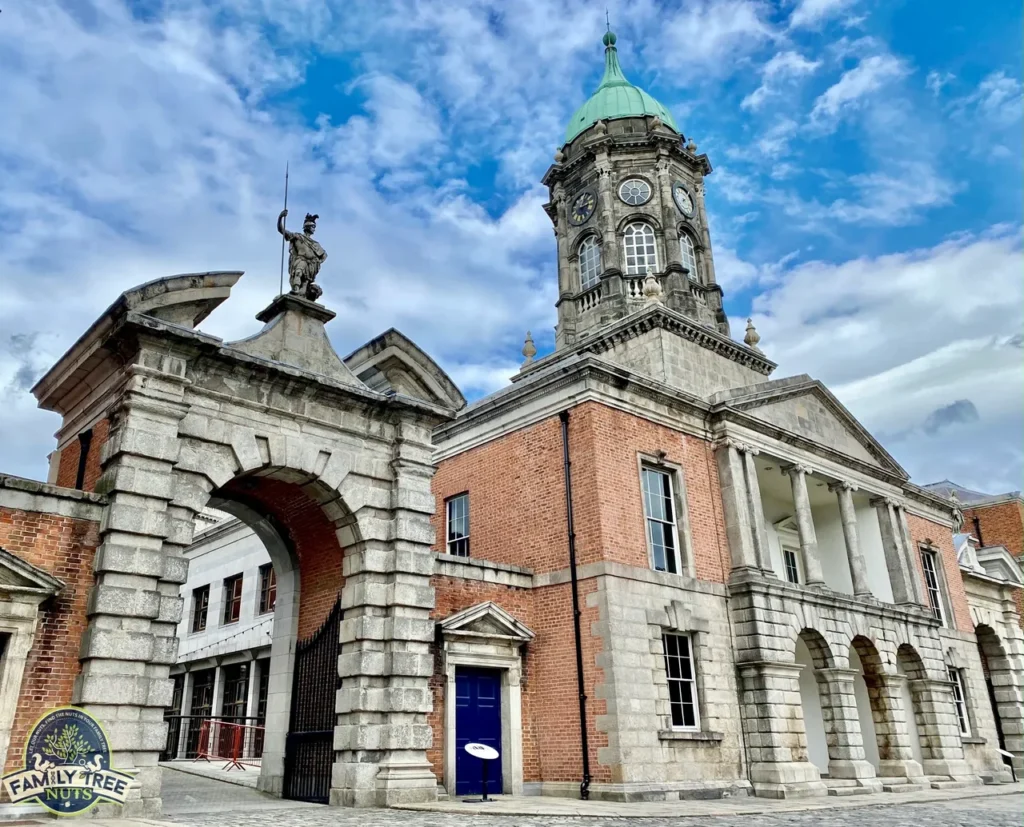
32- The River Liffey
The River Liffey’s name in Gaelic literally means “an life” and that’s exactly what it has been to the city of Dublin throughout all history. The river runs about 82 miles in eastern Ireland and is fed by the Rivers Dodder, Poddle and Camac until it flows in Dublin Bay in the Irish Sea. Since Dublin’s founding, the river has been its source drinking water and the supply for the hundreds of breweries and distilleries over the centuries. It also has been the most important shipping highway, not only to ships in the bay, but also around the city and upriver. As with all major cities, the river has often had issues with pollution, and has sometimes been referred to by the locals as, “The Sniffy Liffey” because of its foul odor. It should be mentioned that Dublin takes pride in the cleanliness of its important river. Today dozens of iconic bridges cross the river used by both vehicles and foot traffic and walking along and across this historically important river is definitely a must do for any visitor to Dublin.
31- Medieval Art and Decorations on Buildings
As with all countries in Europe, Ireland’s cities are centuries old. In the old section of Galway, you will find all things modern world, mixed with medieval time architecture and art. Many of the buildings have family crests, decorations and writings that are as much as 800-years-old. It is an amazing mix of the medieval world mixed with modern times.
30- The Buskers
While buskers exist all over the world’s cities, Galway is specifically known for its variety and quality of them. People come from all over the world to busk on the streets of Galway. You can find buskers that range from a ten-piece band to the more common individual. The city does have rules in place to keep down the congregation of crowds and buskers must have at least twenty songs in order to get a license to perform. Here is a busker in Galway singing one of my favorite Celtic songs.
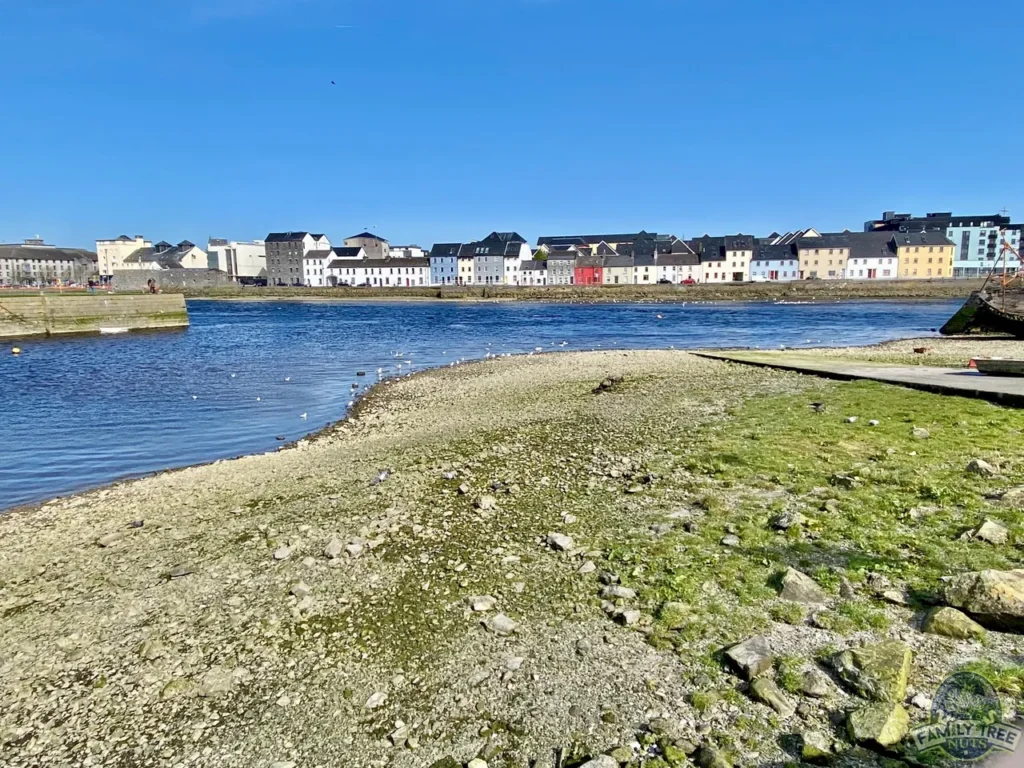
9- The Hall of the Red Earl
In Galway you can visit the ruins of the Hall of the Red Earl who was the head of the ruling de Burgo family until they were ran out of power by the fourteen tribes. which was built in the 1200s as a municipal building or custom house and had disappeared from history by being covered up by modern buildings until it was discovered in 1997. Today you can at any time pass down Druid Lane and see the ancient remains of the castle from behind glass walls.
28- Castle Ruins Inside the Famous Aran Sweater Market
The Aran Sweater Market in Galway is famous in its own modern right and if offers a variety of woolen sweaters, clothing, blankets, and hats, but during a remodeling project in 2017, it was discovered that under the building sat the ruins of the first castle in Galway, built in the year 1232 by the de Burgh family. The ruins are now visible on the floor at the cash register counter of the store.
27- Claddagh Museum
The Claddagh ring has become part of Irish culture and you can learn all about its history and symbolism in Galway’s Thomas Dillon and Son Jewelry store which was founded in 1750 and has reportedly produced the iconic ring since its beginnings. This little museum is jam packed full of history relating to the ring and has several rare and valuable Claddagh rings on display.

26- Lynch’s Castle
Lynch’s Castle was built in the 1500s and is touted as being the finest 16th century tower house in Ireland. The castle was home to the Lynch family which were one of the 14 ruling merchant tribes of Galway. One story about the Lynch family was in 1493 when James Lynch Fitzstephen was the mayor of Galway, his son was convicted of murdering a Spanish sailor. Upon his conviction, Mayor Lynch hung his son outside of a window for all to see. This is said to be where the word “lynch” or “lynched” comes from. The castle is decorated with crests of the family and a carving of a monkey with a baby. It is said that one time during a fire, a baby of the family was rescued from the house by the pet monkey and the family commemorated the fortuitous event with the carving. The castle is now an AIB Bank.
25- The Galway Mall
It is odd to find a visit to a modern mall on the list of top historic places of an area, but the Galway Mall is no ordinary mall. Inside among the modern stores is a section of the original city wall that was built between the years 1250 and 1270 that encircled the town for protection. When the mall was built in 2000, this section of the almost 800-year medieval wall was saved and protected inside the mall for us all to marvel at. Seeing a structure with so much history inside a shopping mall is something that is hard for us in the United States to fathom.
24-Eyre Square
Eyre Square is the center of activity for the city of Galway. This spot has been an open area since the early days of the city and served as a town green used for livestock grazing or gathering place. Eyre Square is sometimes called John F. Kennedy Park because JFK visited the square and gave a speech on June 29, 1963, and was the first president to do so during his term of office. A monument commemorating the event sits on the edge of the square. The Square is home to several attractions throughout the park. One of which is the fountain with the metal artwork of the Galway Hookers, which are the fishing ships that have been so important to the city’s economy. Another attraction of note is the Liam Mellows statue who was a hero of Ireland’s War of Independence. Near the center of the park is the statue of Pádraic Ó Conaire, the author so important to the rebirth of the Irish language. In the front of the square you will find the Browne Doorway. The doorway was built in 1627 and used to be on the front of the Browne Mansion, one of the fourteen ruling merchant families of Galway. The door was moved to Eyre Square in 1905 and used as an example of the elaborate architecture of the city in medieval times. Also, in the front of the square you will find banner flying for each of the fourteen merchant tribes of Galway that played such an important role in the city for over five hundred years. It is easy to see why Eyre Square has certainly been one of the most important spots in Galway since its beginnings.
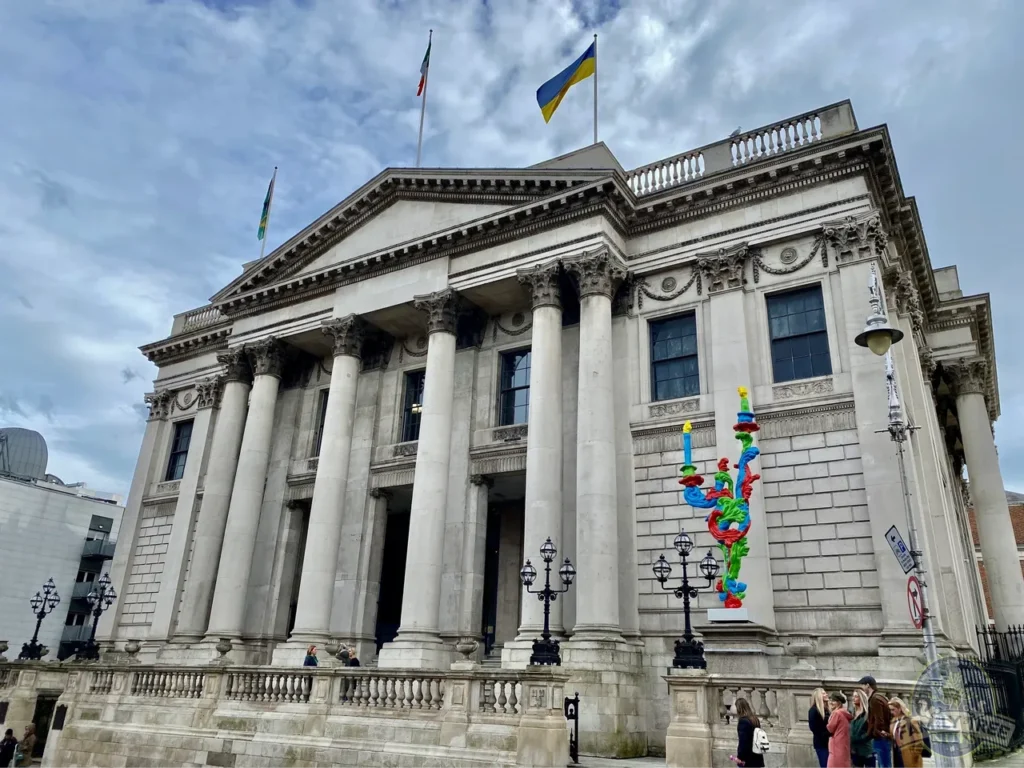
23- Phoenix Park
It is said that Phoenix Park is where Dublin goes to breathe. The park is 1,750 acres large and was first set aside in the 1660s as a royal hunting park. The park still has a large herd of wild deer that call it home. It is also the home to several famous and important landmarks such as the Dublin Zoo, the United States Embassy, Ireland’s President’s Home, and the Magazine Fort. The park also proudly houses important monuments. The most notable is the Wellington Monument, which is a 203’ tall obelisk that commemorates the Duke of Wellington’s military victories, including his defeat of Napoleon Bonaparte at the Battle of Waterloo. This monument can be seen at many points around the city. Another important landmark in the park is the Papal Cross which is a 115’ high cross on top a mound surrounding and open 15 acres. The cross stands on the spot were Pope John Paul II conducted an open outdoor mass on September 29, 1979 for over one million people who had gathered. The park is open 24 hours a day and 365 days a year and is certainly a must see when you visit Dublin.
22- Dublin City Hall
This historic building was built in 1779 and served as the Royal Exchange. It began being used as City Hall in 1852, and remains in use today. What makes this site important enough to make this list is the action that took place here in the 1916 Easter Rising which was the beginning of what eventually lead to Irish Independence. A group of the Irish Citizen Army, otherwise known as the ICA, under the command of Captain Seán Connolly, attacked the British Government at Dublin Castle. The group shot and killed Dublin Metropolitan Police Officer James O’Brien and took the guard house, but were not able to take the whole facility and was forced to retreat back to City Hall. Upon fortifying the building, Captain Connolly was on the roof top when he was shot dead by a British sniper. He was the first rebel to die in the 1916 Easter Rising. A few hours later second-in-command Lieutenant Seán O’Reilly was killed by machine gun fire attempting to get off the roof through a skylight. Another of the ICA men to die that day was George Geoghegan, who was a British Army veteran of the Second Boer War in South Africa. George was shot in the head early in the fighting. The final man killed here was Louis Byrne who was one of the reinforcements sent to City Hall from the rebel headquarters at the General Post Office. Visiting the site of the first rebel killed in the 1916 Easter Rising is a quite sobering experience.
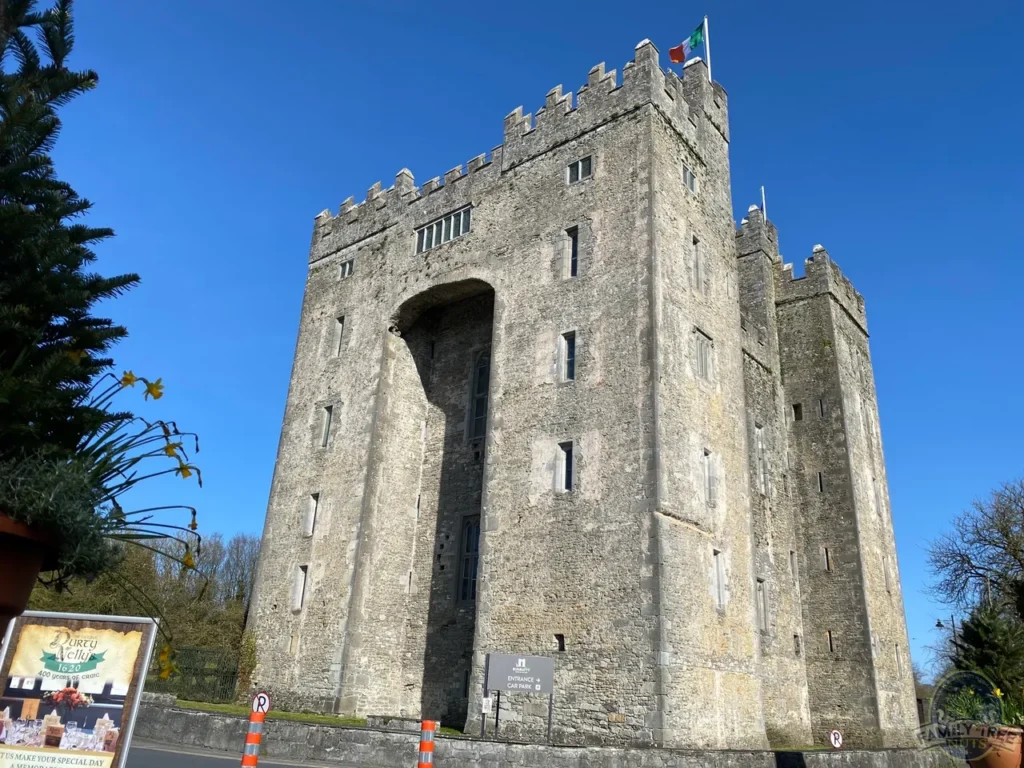
21- The Kings Head
The Kings Head Tavern and Restaurant is Galway in one of the most unique spots anywhere. The building is over 800-years-old and was once the home of the Mayor of Galway, Thomas Lynch Fitz-Ambrose until it was seized in 1653 during Galway’s surrender to Colonel Peter Stubbers who was one of Oliver Cromwell’s men. Colonel Stubbers was said to be the man who beheaded the Catholic King Charles I a few years earlier in 1649. The king had been condemned to death but no one was brave enough to actually do the execution until Colonel Stubbers stepped up and took on the gruesome task.
20- Galway’s Kirwan Lane
Kirwan’s Lane is a small stretch of road that is almost untouched from medieval times and its architecture is from the 1500s. The lane was inside the old medieval walls of the city and is named after the Kirwan family which is one of the fourteen ruling merchant tribes of Galway. The lane is the site of the famous 1700s Martin Theatre where the patriot Theobald Wolfe Tone once performed. Walking quietly down Kirwan’s Lane you can really imagine that you are back in time.
19- Bunratty Castle
Bunratty Castle is an impressive tower house castle that was built in the 1500s in County Clare. Its name in Irish means “mouth of the Ratty”, due to its location on the River Ratty. Fortresses have been here since the time of the Vikings due to its strategic spot. The castle has a historic interpretive village around it and is used for drama dinners similar to what we would see at Medieval Times here in the United States. The castle is one of the most perfect spots for photos of a castle in all of Ireland.
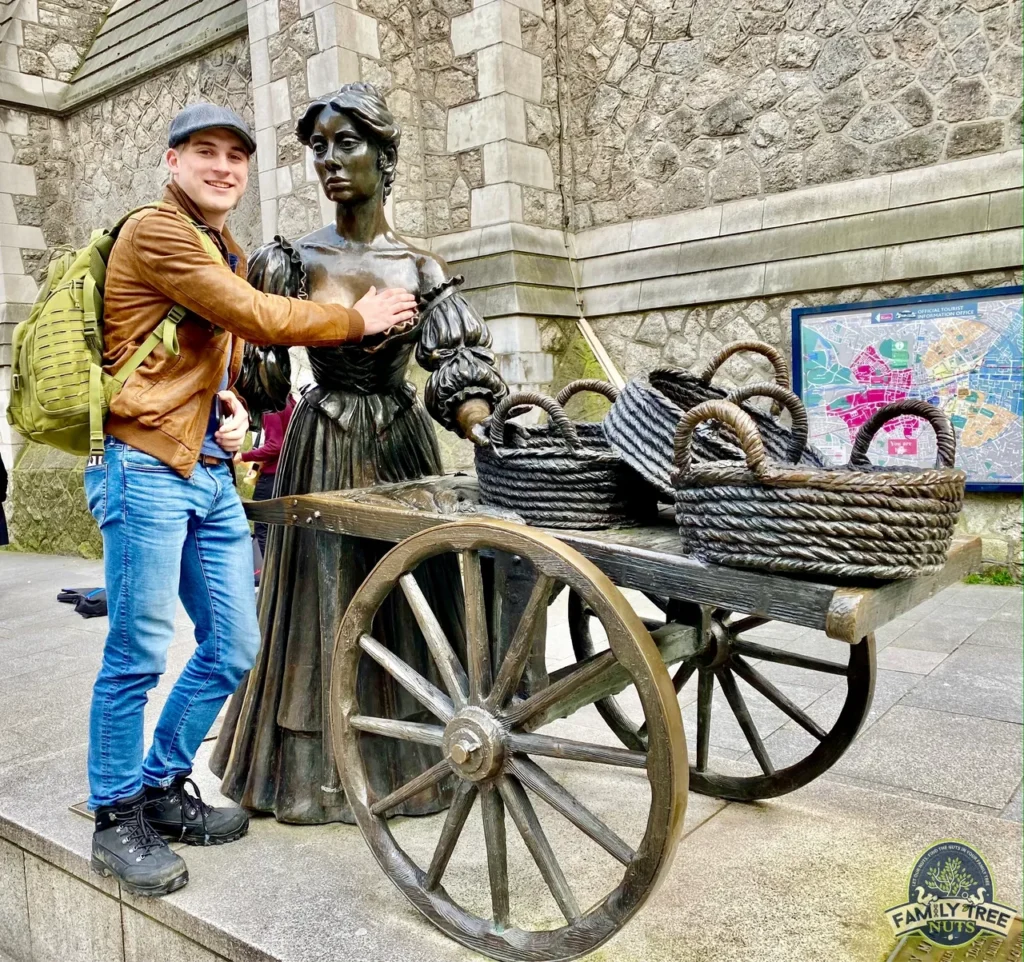
18- The Molly Malone Statue
Anyone of Irish descent worth their salt is familiar with this song. “In Dublin’s fair city, where the girls are so pretty, I first set my eyes on sweet Molly Malone…” Sing along with me, just kidding, I know how awful I sound, but I’m too Irish to care. The Molly Malone Statue sits in front of the old Saint Andrew’s church which is now used as the Tourist Information Office. Some say Molly Malone is a fictional character and a representative of a group of women in Dublin, in the 1600s called “fishwives”. Fishwives were the wives or daughters of a fisherman. These women were said to be gruff, unpolished and foul mouthed. I think you are getting the picture and perhaps you are thinking of some women that you know today that fit that same description. Molly was a “hawker” or a “monger” which was someone who sold things from a cart on the streets. Hawkers and mongers of the time were often known to work a different trade on the streets at night, but our Molly is said to be one of the few that maintained her chastity and dignity. The legend says that Molly sadly died of a fever at a young age. While some maintain that Molly Malone is a symbolic character, others say that she was a real person. In fact, in the Dublin records there was found a woman named Molly Malone who died on June 13, 1699. There is no evidence that this particular Molly Malone is the one whom the song was written for, but in 1988, the year of the 1,000th anniversary of Dublin, June 13th was declared as, “Molly Malone Day”. The holiday has been celebrated in Dublin on each June 13th since. Perhaps you will now celebrate Molly Malone Day too. Supposedly it’s good luck to touch her left breast, or is it her right breast? Perhaps you should touch them both to be safe. Be sure to see our individual article from here!
17- Saint Nicholas Collegiate Church
One of the most beautiful historic buildings in Galway is Saint Nicholas’ Collegiate Church was built in 1320, over 700-years-ago. The church is dedicated to Saint Nicholas of Myra, the patron saint of seafarers, archers, repentant thieves, brewers, pawnbrokers, unmarried people, students, and of course children. Saint Nicholas was known for secret gift-giving and that lead to the tradition of Saint Nick, or as we know him, Santa Claus. So, in a roundabout way, I suppose you can say that this is the church of Santa Claus. Like any churches from the medieval times, the church has played a large role in the history and politics of the city. It is said that when Christopher Columbus visited Galway, he worshiped at this church. The architecture is amazing to look at and folks gather in its yard to socialize or have their lunch. By the way, the sign posted states that antisocial behavior is forbidden so perhaps you should make sure that you kiss the Blarney Stone before you visit Galway. Outside the church fence the Galway Market at Saint Nicholas Church is held. Here you will find stalls with vendors selling food, crafts, art, and other trinkets of interest.
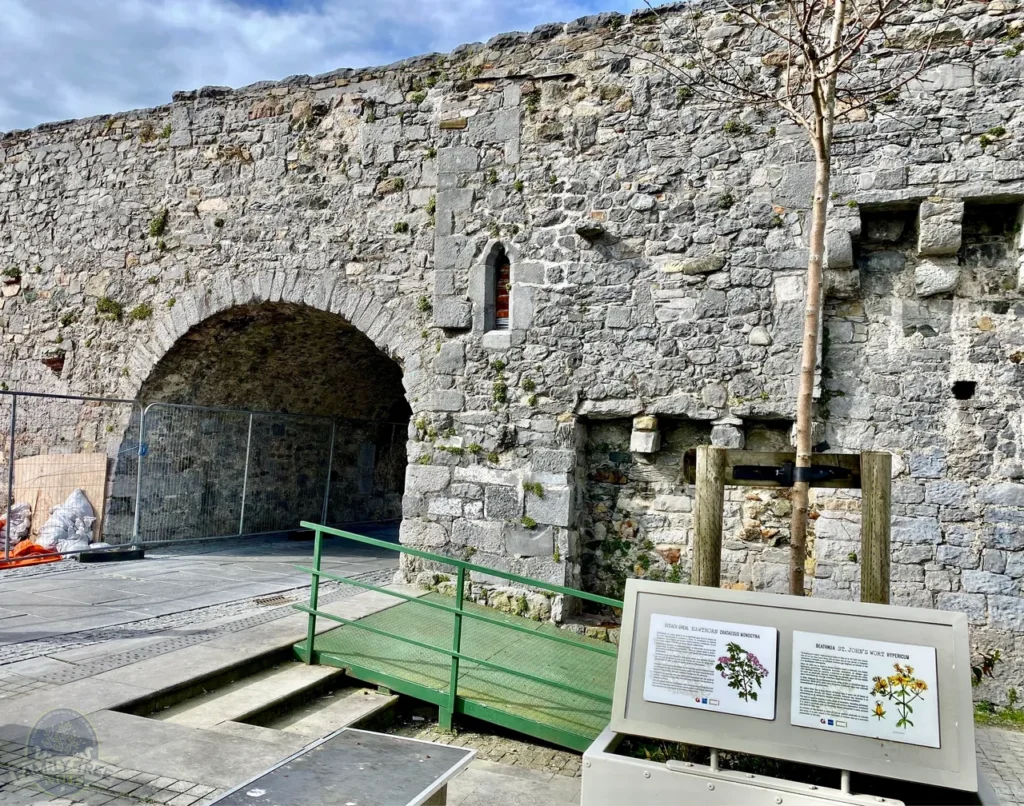
16- The Spanish Arch & Christopher Columbus Monument
The Spanish Arch is one of the last remaining sections of the old medieval wall that surrounded Galway. The arch was part of an extension of the original walls and was built in 1584 and a defensive structure to defend the city from raids. When it was built, the water ran all the way up to the arch and it was damaged by a tsunami that followed the Lisbon earthquake in 1755. It is amazing to imagine all that this section of wall has seen and by passing through it you are doing something that untold others have done for centuries. Outside of the Spanish Arch is the statue to Christopher Columbus that states, “On these shores around 1477 the Genoese Sailor Cristoforo Colombo found sure signs of land beyond the Atlantic”. The statue was donated by the city of Genoa, Italy, in 1992, the five-hundred-year anniversary of Columbus’ famous voyage, to celebrate the piece of Columbus’s story that the City of Galway has. Also, outside of the Spanish Arch is a small concrete obelisk with a marker that states, “The Galway Democratic Republic was declared on October 4, at this spot”. I must admit that while filming the arch, I backed into this monument and fell completely over it, and landed on my shoulder, in front of a large crowd. Now that’s a memory that will stick with me!
15- Temple Bar District
If you ask anyone what is one thing that comes to mind when they think of Irish culture and undoubtedly, one of the first things that will come to mind is an Irish pub. Dublin’s Temple Bar District is by far the premiere spot in the world to enjoy a pint, share in the craic, and take in some the wonderful songs of our heritage. The area was originally established in the early 1600s as a suburb outside the city walls, along the River Liffey. The area is thought to be named after Sir William Temple, who was once a leading advisor to King Charles II. Temple built a house and gardens in the area in the early 1600s. Today the area is home to dozens of iconic Irish pubs which are always packed, no matter the day or even the time of day. The world-famous Temple Bar was founded in 1840, and is the obvious anchor of the area, and a must visit when coming to Dublin. I’d also be amiss if I didn’t mention that there is a restaurant next to The Temple Bar called, “The Shack”, where we had the best fish and chips of our lives, no exaggeration. Don’t forget to try one of their “Baby Guinness’”. You shouldn’t be alarmed if the Temple Bar itself is too packed, there are plenty of places to find the perfect Irish environment that we all look for when coming to Ireland. The crowds are always cheerful and the moods are lively. When it’s time to finally head to bed, you can take in some beautiful lights on the River Liffey.
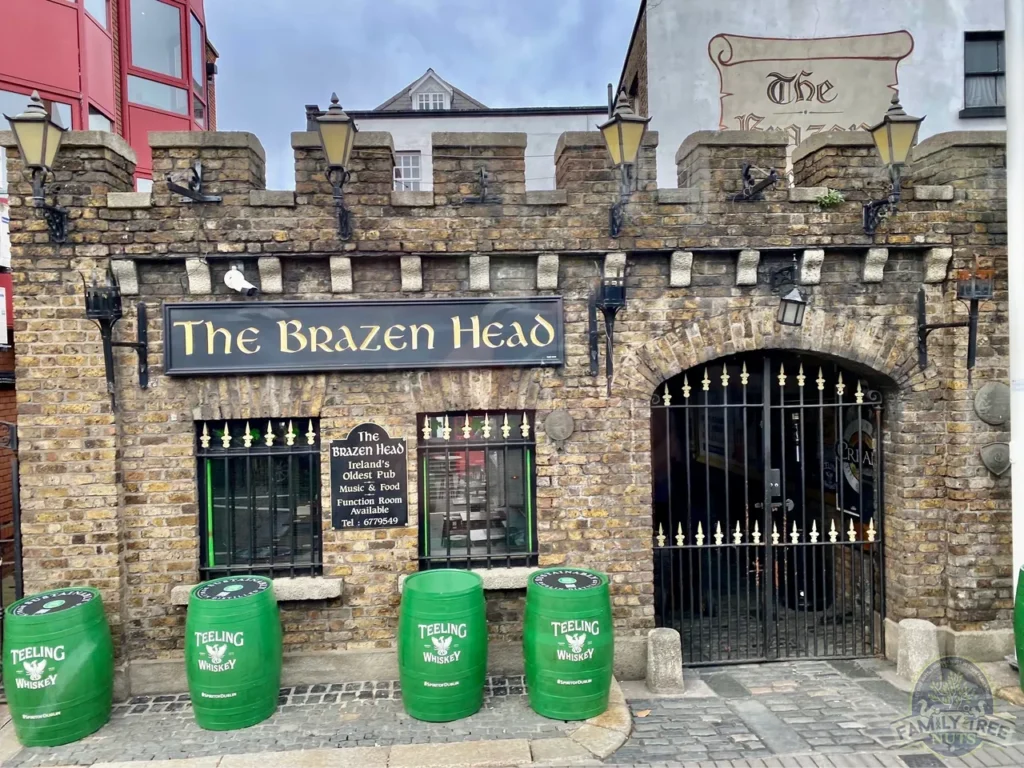
14- The Brazen Head
Since we are on the topic of Irish Pubs, one should not miss a chance to visit what is said to be the oldest pub in Ireland, The Brazen Head. It is hard to wrap our heads around it, but this pub was founded in the year 1198, that’s right, 1198! The pub sits on the small area where the original city of Dublin began. Just outside its door is the where the first bridge across the River Liffey once stood. The pub has served as a tavern and hotel over the centuries and the ambiance is hard to beat. The walls are decorated with Irish history and you can even leave something behind to say you were there. Be sure to grab you a t-shirt from here too, because if you are going to try to achieve your goal of attending all the pubs in Ireland, you may as well start with the oldest.
13- Galway City Museum
The Galway City Museum sits on one of the most historic spots in the city, just inside the Spanish Arch, overlooking The Claddagh across the River Corrib. The current museum which was built in 2007 houses three floors of detailed regional and Irish history. Its main exhibits showcase several subjects which include ancient regional history, the Celts who settled the area and their culture and customs, the Irish struggle for independence in the early 1900s, The Claddagh, and the maritime history and marine biology of the area. The museum has walls with full length glass overlooking The Claddagh and the Spanish Arch. Be sure to see our individual article from here!
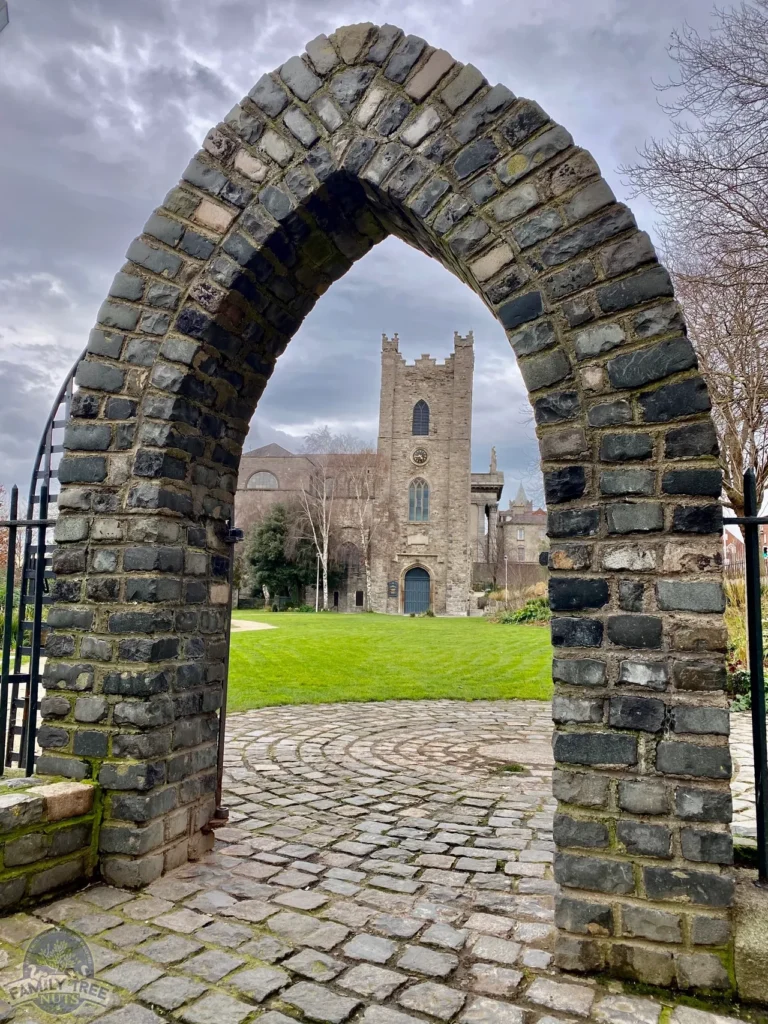
12- Dublin Castle
Dublin Castle has been called “the nerve center of historical power in Ireland”. A place of military defense has been on this site, since at least the time of the Vikings, over one thousand years ago. The castle began to be constructed in the year 1204, over eight hundred years ago, on the orders of King John of England, yes that King John, the brother of King Richard the Lionhearted and of Robin Hood Fame. He’s also the same King John who signed the Magna Carta, this castle is that old! The castle served as the seat of government for the Irish Viceroy, who was the representative of the ruling King of England, and later Great Britain, from 1204, until 1922, when control was turned over to an independent Republic of Ireland. The castle and courtyard held government buildings and its rooms and court yard have been used for elaborate balls and ceremonies. As mentioned above, the castle also played a large role in the 1916 Easter Rising. You may be surprised to hear what connections Dracula has in common with Dublin Castle. The author and creator of Dracula, Bram Stocker, worked as the Clerk of Inspection at Dublin Castle and his father worked there for fifty years. Finally, the castle was the scene of the 1907 theft of the valuable diamond Chains of Office of the Knights of Saint Patrick, sometimes called the “Irish Crown Jewels”. The crime has never been solved, and the jewels have never been found, so if you have Irish ancestors, it may be worth looking through grandma’s attic. Be sure to see our individual article from here.
11- The Viking Arch
What is cooler than passing through a gate that was built by the Vikings? Just a stone’s throw away from the Brazen Head is St. Audoen’s Church, which was built in the year 1300. Outside of the church is a park and on the border of the park is the last remaining section of the city’s wall that is said to have been built around the year 1100. Here you will see the last remaining gate of the old city walls. Some say this arch is even older than the walls, and was standing here when Dublin was still controlled by Viking settlers making it the last thing standing that was built by the foreign invaders. Be sure to use your imagination of all the people through the centuries that passed right under this arch just like you can.
10- The Pub of Your Choice
Anywhere in Ireland the local pub will always be the place to go to see the true culture of the area. It is said that Ireland has over 10,000 pubs so you’d better get up early in the morning to try to hit them all. Many of the pubs are centuries old and that comes with a tremendous amount of individual character. Ireland’s pubs are known for having sing-alongs in traditional Irish music and that is something most of us are looking for when you visit Ireland.

9- Jameson’s Bow Street Distillery
It is said that, God invented whiskey so the Irish would never rule the world. The word “whiskey” comes from a Gaelic word that means “water of life”, so it is easy to understand how perfect the words, Irish, and whiskey sound together. Jameson is by far the most popular Irish whiskey in the world and you won’t want to miss visiting the Bow Street Distillery. The site opened in 1780 and even though the product is no longer produced here, you learn all about the long and awesome history the company has had. The Jameson family not only oversaw the whiskey business but were also leaders in the community including being High Sheriff of County Dublin. Here you can take a tour that covers the history of Jameson, how it is produced and how the process evolved, and of course enjoy a sampling while learning about the different products that Jameson produces. Of course, at the end of your visit, you are welcome to visit the bar decorated with the emerald bottles. Be sure to see our individual article from here!
8- Guinness Storehouse at Saint James’ Distillery
If you ask anyone what is a product that is produced in Ireland, almost everyone will first mention Guinness. Even the companies trademark harp became the insignia of Ireland when it earned its independence in 1922. It is not only a staple of any Irish parade or festival all over the world, but also a staple of the Irish people as well. Guinness has been labeled as the number one beverage in Ireland and it would be hard to find even a small town where you couldn’t grab a pint in a matter of minutes. Guinness’ association with Ireland is why you definitely won’t want to miss visiting the Guinness Storehouse. Arthur Guinness rented this place in 1759, on a 9,000-year lease at 45 pounds a year and here it is today. When you visit the location, you can go on a self-guided tour to learn all about the company’s history, and how it is made. Guinness has always been famous for its advertising campaigns that involved catchy jingles such as, “My Goodness, My Guinness”, and humorous situations with animals and people. Here you can literally get your face drawn on the foam head of a pint! How cool is that!? At the end of the tour is one of the most popular spots in Dublin, the 360-degree gravity bar. Surrounded by glass, and seven stories high, you can see amazing views of the city. Historical information is on the glass about things you are looking at. Being able to see the city in such a way that once only the birds could, makes this stop is a must when visiting Dublin. Be sure to see our individual article from here!
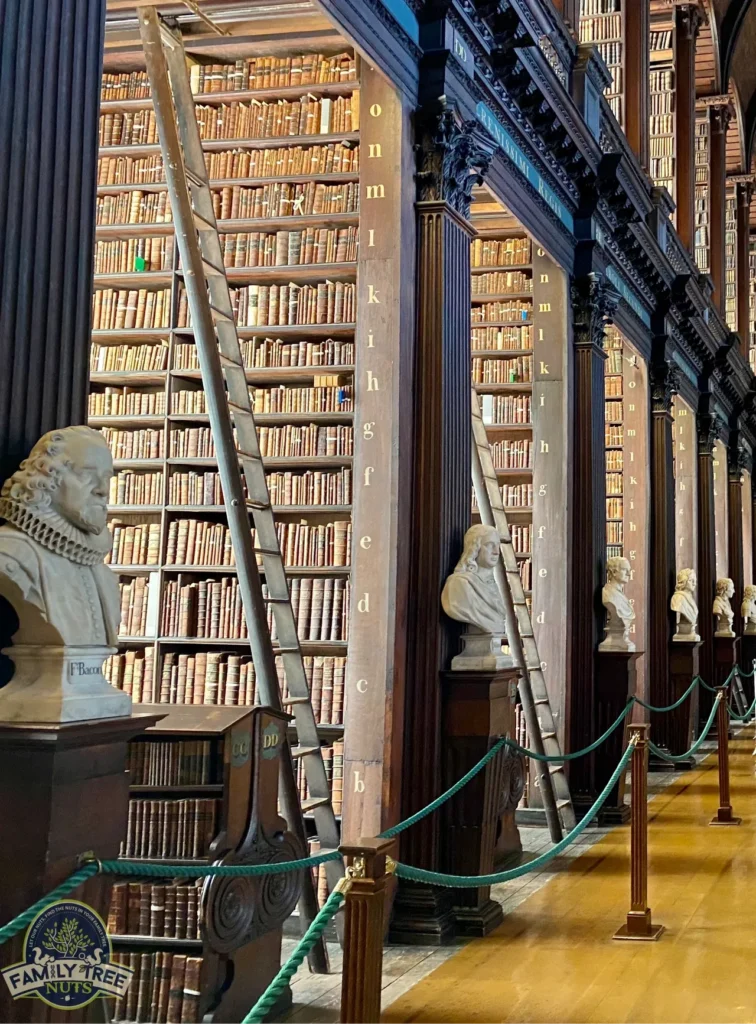
7- Trinity College
Trinity College was founded in 1592 by Queen Elizabeth I, and until modern times was for protestants only. Trinity College is also referred to as The University of Dublin and was modeled after England’s Oxford and Cambridge Universities. Since its founding, Trinity has been at the center of Ireland’s history and politics and to this day, continues as one of the most elite universities in the world. The college is home to several items of Irish pride. One of those items is the Brian Boru Harp, which is the oldest surviving Irish harp, and the insignia of Ireland. It was once mistakenly linked with Brian Boru, high king of Ireland who was killed in 1014 at the Battle of Contarf, in modern day Dublin. Also, on display is one of the last remaining copies of the 1916 Proclamation of the Irish Republic. This copy was posted to the wall of the General Post Office at the start of the 1916 Easter Rising, which eventually lead to Ireland’s independence from Great Britain. Both the Brian Boru Harp and the 1916 Proclamation of the Irish Republic are on display in the Long Room. The Long Room which is also called, Trinity College’s Old Library building, was founded in 1732 and is in use to this day. The library is sixty-five meters long, making it the longest single room library in Europe. It houses over 200,000 of the college’s ancient books and over seven million pieces of printed materials. For obvious reasons it has been nicknamed, the “Harry Potter Library”. Be sure to see our individual article from here!
6- The Book of Kells
Although the Book of Kells is housed at Trinity College, its magnificence is deserving of its own spot on this count down. The Book of Kells was written around the year 800, and contains summaries of the Gospels of Jesus Christ and is written in Latin. It is ornately decorated with figures of Celtic knots, designs, humans, animals and mythical creatures. Its beauty has caused it to be called, “the work of angels”. Contained in the book are 340 leaves or folios in Latin, which are left-side and right-side pages of an open book. The Book of Kells has withstood dozens of invasions and conflicts by Vikings, and English Protestants, and has survived them all. There are a handful of books that have survived to this day that are similar to the Book of Kells but none of them so beautifully decorated. Trinity College has an excellent exhibit where you can learn all about this treasure and you can even see the book with your own eyes, but no photography is allowed. Today the Book of Kells is a symbol of national Irish pride and one of the countries most sacred historical objects. Be sure to see our individual article from here!

5- The Claddagh
Love, Loyalty and Friendship. Those three powerful words make up the meaning of the ring worn throughout five different centuries, by millions of Irish, and those of us with Celtic ancestry. Even if you haven’t had one yourself, chances are you have seen someone wearing one, or at least seen the image somewhere. It has become a fashionable way to celebrate one’s heritage and pride of their Celtic roots. It is surprising that even with the ring’s popularity, very few know the origin of the ring and where it came from. The ring sprung into existence around the year 1700 out of an ancient small fishing village outside the city walls of Galway. The legend tells of Richard Joyce who was betrothed to soon be married, but captured by North African pirates, and spent fourteen years as a slave of a jewelry maker. He used his new-found skills to fashion a ring for his love at home and when he was released he returned to Claddagh and married her with his ring. That ring now is all over the globe and you can walk the shores of where it all began. Be sure to see our individual article from here!
4- The Cobh Heritage Centre
Anyone with Irish ancestry will find the Cobh Heritage Center a moving experience. Here the story of Irish emigration is told in powerful detail. Ireland has seen several waves of emigration and to this day still hasn’t reached its population of the early 1800s. While it was not uncommon for Irish to emigrate in the same fashion as folks from other countries did, it certainly must be mentioned that millions of Irish left Ireland against their will as slaves or forced indentured servants. The center is located in a former train station along Cork Harbor where more Irish left than another other port, and viewed Paddy’s green shamrock shore for the last time. The center has an onsite genealogist on staff that can help you with those difficult Irish ancestry searches. Besides being a key location of the diaspora of the Irish people, it was also the last port of call before the Titanic sailed off into the Atlantic and met if fateful doom. Visiting the Cobh Heritage Centre will leave you with a sobering understanding of what your ancestors went through to start a new life in the new world. Be sure to see our individual article from here!
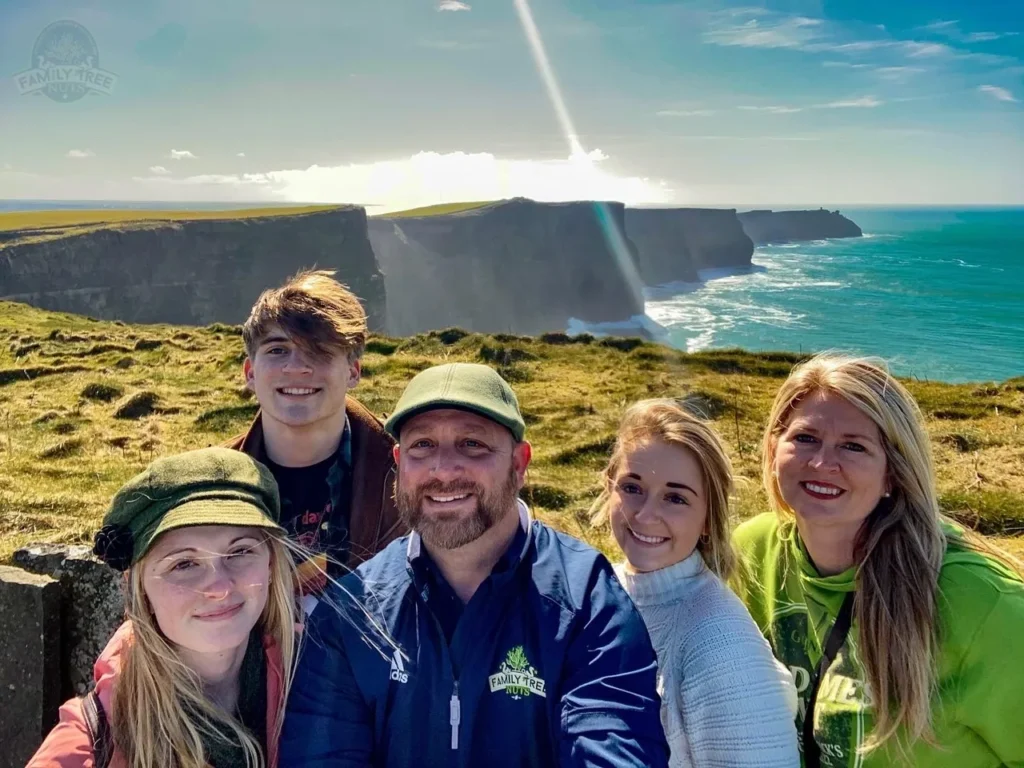
3- Blarney Castle
Blarney Castle is one of the most popular castles in the world and certainly in Ireland. Its magical mysticism and legends draw us into its colorful history making it a place of pilgrimage over the ages just to share in its blessings. The locations name is associated with fairy’s, witches, biblical characters, royalty, medieval battles, knights, dungeons, poison gardens and more. It’s picturesque beauty and majesty have made it one of the most popular places to visit in all of Ireland. The castle is most known for its famous Blarney Stone, which legend states that if you kiss it, while hanging upside down, you will be blessed with the Gift of Eloquence, or the Gift of Gab. There are many legends about what the stone is and where it came which adds to its nostalgia. Few places on earth allow you roam around freely and imagine yourself in another time in history like Blarney Castle does. Be sure to see our individual article from here!
2- The Cliffs of Mohr
My wife Stephanie said that The Cliffs of Mohr was the most spiritual place that she has ever been. Words are hard to find to describe the majesty of these cliffs that are situated in County Clare, on the edge of Europe. The cliffs run for about fourteen miles and range from about 390 feet to about 702 feet above the ocean below. The cliffs are often the scene of wedding proposals, romantic kisses, and family photos and of course flex pictures. The cliffs have a very informative and well-done museum and interpretive center where you can learn about the history, biology and ecology of this unique area. This site is one of the most visited sites in all of Ireland with more that 1.5 million visitors every year. Words, pictures, and videos simply cannot describe the power of seeing the Cliffs of Mohr with your own eyes.

1- Saint Patrick’s Cathedral
It is said that around the year 450 AD, over 1,500 years ago, Saint Patrick himself baptized Irish converts in a spring on this spot. This 800-year-old cathedral had been declared the National Cathedral of Ireland, and with just one visit, and a little understanding of its history, will leave you little doubt as to why. The first documented mention of a church here was in the year 1178 but it is believed that a church has been here long before then. Construction on the Cathedral began in 1220 and its history is full of important events from Irish history. It is estimated that between six to seven hundred souls are entombed inside or buried outside the cathedral. The walls are lined with monuments and statues of important people throughout Dublin’s history. One of the most unique things about the cathedral is above the choir stalls are the helmets, swords, and flags of The Knights of Saint Patrick. The cathedral was totally remodeled in the 1860s, with funding provided by Sir Benjamin Lee Guinness, the heir to the Guinness brewing empire. During that renovation the stained-glass windows were added as well as the medieval style floor tiles. Outside the cathedral is Saint Patrick’s Park, which holds the Literary Parade that was built in 1988, the 1,000th anniversary of the City of Dublin. Along the wall are the shrines of twelve literary giants from Dublin, each of them having had an impact on the world. Many say visiting this cathedral gives them the feeling of being in the presence of God Almighty and that alone makes it a place that you don’t want to miss out on visiting. Be sure to see our individual article from here!
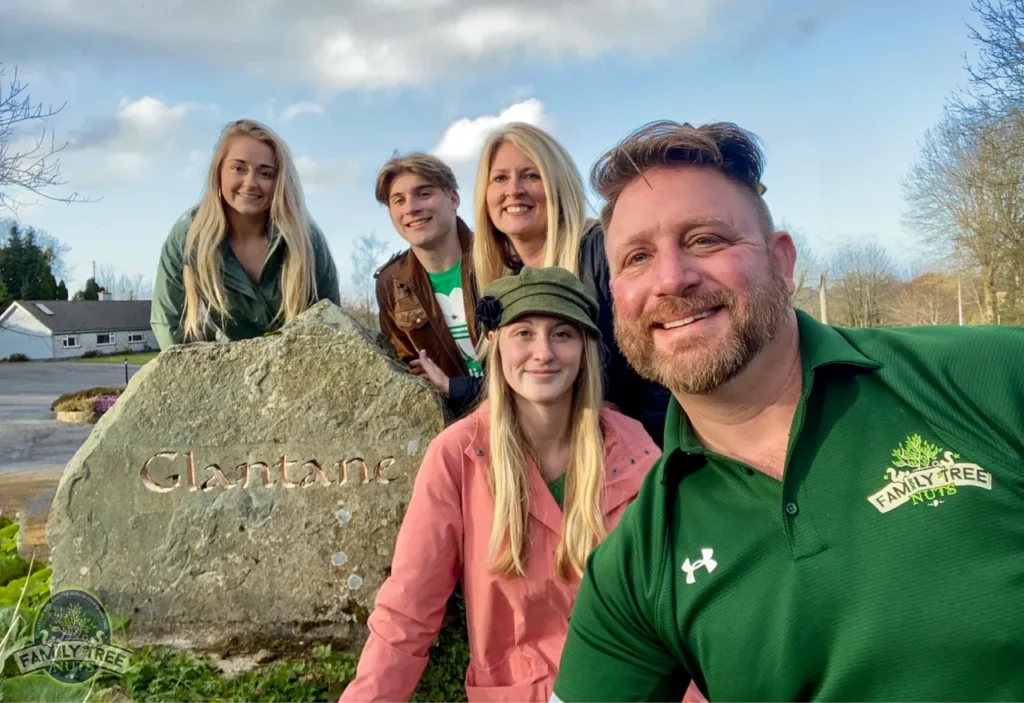
Bonus: The Place of Your Ancestors
For those of us with Irish ancestry, no place in Ireland can be so exciting, and rewarding, then visiting the towns, glens, counties, and cemeteries where our ancestors came from. Many have used the word “spiritual” when it comes to visiting these places. When you make these journeys, you get a better understanding of the world they lived in, and why they made the decision to emigrate. I have to admit that even though I am aware of my ancestors, and who they are, for me the experience was surreal. Seeing my own surname in the cemeteries and knowing that your DNA has been in a certain area is unbelievably powerful. Many that do genealogy describe similar experiences when visiting sites in the United States where their ancestors lived, but going to places like this in their country of origin is a totally different level. It’s certainly hard to put into words and I am forever changed by the experience. Be sure to see our individual article from here!
So that was it, our Top 40 list of must sees in Ireland. What do you think? Do you agree? Did we leave something out? We’d love to hear from you in the comments below. We are extremely proud to have brought you on this epic journey to all of these wonderful historic sites. Don’t forget to check out the video below to see all these amazing places.
– Col. Russ Carson, Jr., Founder, Family Tree Nuts
